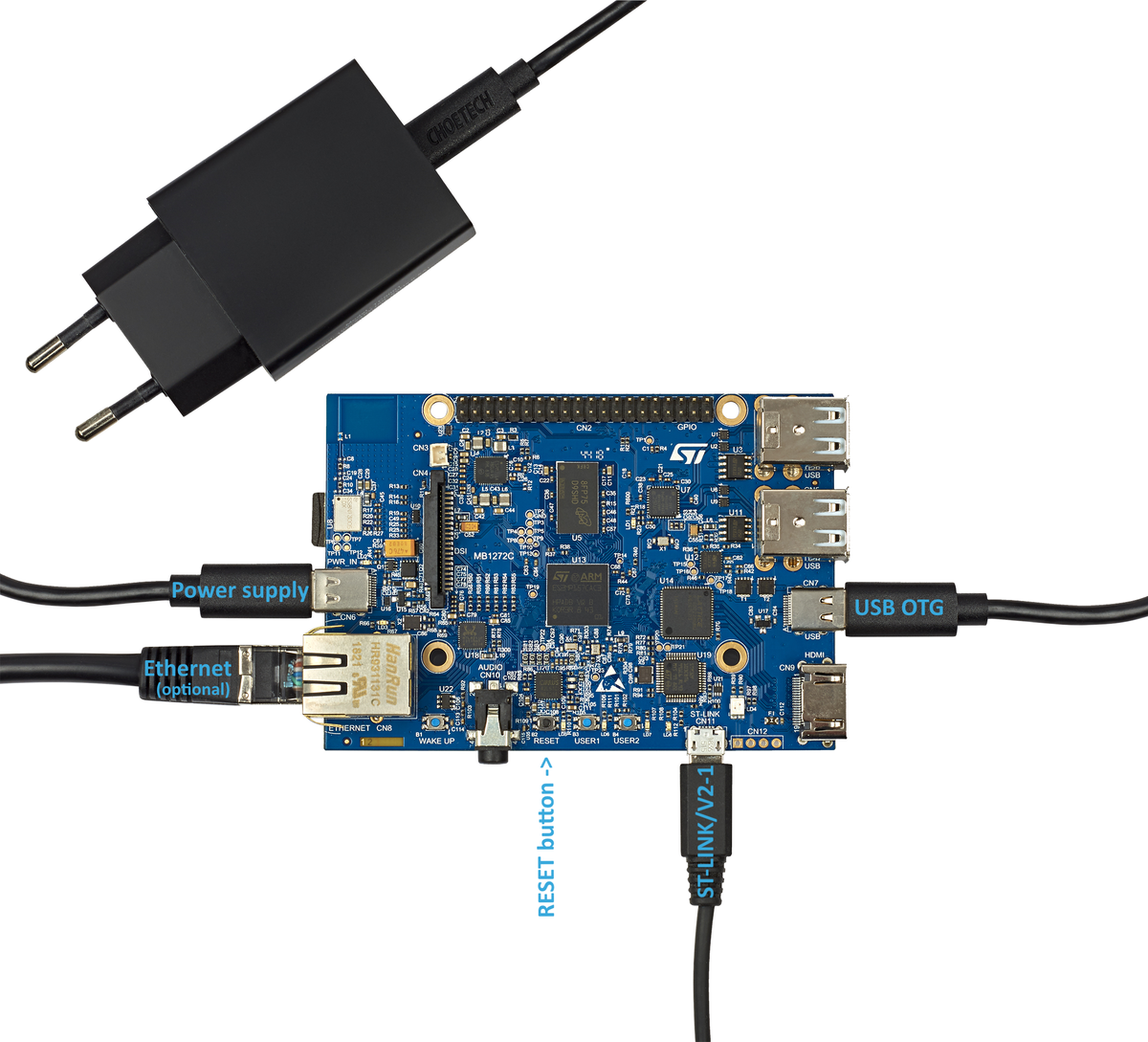STM32MP157F-DK2
This device/board is currently fully supported

Using this device is very simple. Connect:
- plug-in the SD Card in the board slot.
- Ethernet
- Connect a USB cable to the ST-Link port
- Power supply

After the power supply is connected the device will start booting. At this point we can attach a shell session to the device's ST-Link port using a program called Minicom. If it is not already installed on your system, run the following commands
sudo apt-get install minicom
then try to connect to the default serial port:
sudo minicom -D /dev/ttyACM0
This port name may change depending on your setup, another variant is ttySTM0
if the boot process goes fine, you should see something like is shown below in the Minicom terminal, otherwise there might be a problem during the boot stage on your device.
[ 5.540230] stm32-dwmac 5800a000.ethernet eth0: IEEE 1588-2008 Advanced Timed
[ 5.548979] stm32-dwmac 5800a000.ethernet eth0: registered PTP clock
[ 5.555785] stm32-dwmac 5800a000.ethernet eth0: configuring for phy/rgmii-ide
Poky (Yocto Project Reference Distro) 3.4 stm32mp1 /dev/ttySTM0
stm32mp1 login: D/TA: TA_CreateEntryPoint:8 Create entry point
Creating
D/TA: TA_OpenSessionEntryPoint:21 Open Session entry point
Opening session
[ 33.768739] usb33: supplied by vdd_usb
[ 33.771193] vref: supplied by vdd
[ 33.774503] vref: disabling
[ 33.777169] vdda: disabling
Poky (Yocto Project Reference Distro) 3.4 stm32mp1 /dev/ttySTM0
stm32mp1 login:
in case you do not see the login line, press enter , then as user type root and no password is required.
ST documentation is excellent, and you can find plenty of information there.
Check application service
The last step is to check if the application service is running on the device, to do so execute the following command in the minicom port:
ps
the output might look like:
247 root 4304 S sshd: /usr/sbin/sshd [listener] 0 of 10-100 startups
250 root 11116 S /usr/sbin/tee-supplicant -d
252 root 0 IW< [optee_bus_scan]
258 root 10584 S /usr/sbin/tee-substrate-service
264 root 2328 S /sbin/syslogd -n -O /var/log/messages
269 root 2328 S /sbin/klogd -n
272 root 2328 S /usr/sbin/ifplugd
277 root 2328 S {start_getty} /bin/sh /bin/start_getty 115200 ttySTM
278 root 2328 S /sbin/getty 38400 tty1
280 root 2416 S -sh
323 root 0 IW [kworker/1:1-eve]
344 root 0 IW [kworker/1:0-eve]
357 root 2416 R ps
root@stm32mp1:~#
The ps command lists the processes that are running in the device, and you must see the application process called tee-substrate-service.
The tee-substrate-service is a demon process that waits for requests through tcp://localhost:39946, check docs to know how to ensure the service does what is supposed to do.